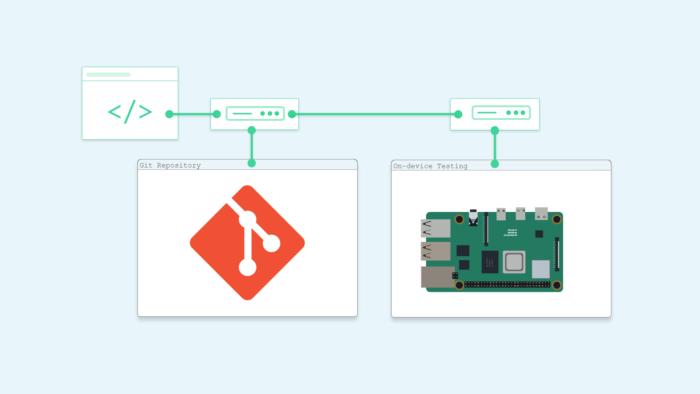Continuous integration (CI) is a software development practice in which developers regularly merge their code changes into a central repository, and automated tools are used to build, test, and validate the code changes. CI has become a standard practice in software development because it helps to catch and fix errors early in the development process, reduces integration problems, and speeds up the delivery of new software features.
Applying CI to embedded systems
In recent years, there has been a growing trend towards applying CI principles to embedded systems. Changes to embedded systems are often more complex and time-consuming to implement compared to standard software development. Within standard software development, programmers rarely need to make changes that can potentially break the entire system. Changes such as modifying the operating system or to critical sensor drivers.
These sort of changes, however, are common in embedded, especially early in the development period. If a bug is found in a critical process, like the boot sequence, it can be extremely costly to fix later. Therefore, it is even more critical to catch and fix hardware errors early in the development process.
A shift towards smart decision makers
We are also seeing a fundamental shift in the embedded space from devices being very simple and simply sending data to the Cloud to them now becoming smart decision makers in themselves. This comes with the added risk that engineers need to address. The environment around the device may change or requirements may rapidly evolve. Embedded systems need to be able to adapt to these changes.
Here is how setting up a CI pipeline can meet this new challenge:
1. Improved quality: A CI pipeline can help to catch and fix hardware errors early in the development process before they become more difficult and expensive to fix. This can help to improve the overall quality of the hardware product.
2. Faster delivery: By automating the build, test, and validation process, a CI pipeline can help to speed up the delivery of new hardware features. This can be especially important for hardware projects with tight deadlines or fast-changing requirements.
3. Reduced integration problems: By merging code changes regularly, a CI pipeline can help to reduce integration problems that can occur when different parts of a hardware project are developed and tested in isolation.
4. Better collaboration: A CI pipeline can help to improve collaboration between hardware developers by providing a centralized repository for code changes and a clear process for integrating and testing those changes.
5. Easier regression testing: A CI pipeline can automate the process of regression testing, which is the process of re-testing a hardware product after changes have been made to ensure that it still meets its requirements. This can save time and resources compared to manually re-testing the hardware product after every change.
Setting up a CI pipeline for hardware projects can help to improve the quality, speed, and collaboration of hardware development, while reducing integration problems and easing the burden of regression testing. While it may require some upfront investment in terms of time and resources, the long-term benefits of a CI pipeline make it well worth considering for any hardware project.


